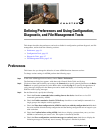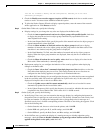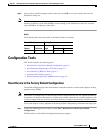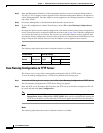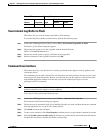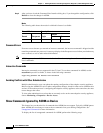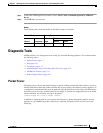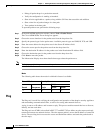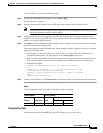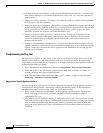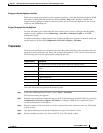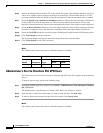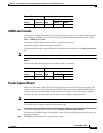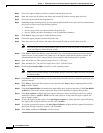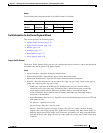
3-8
Cisco ASDM User Guide
OL-16647-01
Chapter 3 Defining Preferences and Using Configuration, Diagnostic, and File Management Tools
Diagnostic Tools
• Debug all packet drops in a production network.
• Verify the configuration is working as intended.
• Show all rules applicable to a packet, along with the CLI lines that caused the rule addition.
• Show a time line of packet changes in a data path.
• Trace packets in the data path.
To open the packet tracer, perform the following steps:
Step 1 In the main ASDM application window, choose Tools > Packet Tracer.
The Cisco ASDM Packet Tracer dialog box appears.
Step 2 Choose the source interface for the packet trace from the drop-down list.
Step 3 Specify the protocol type for the packet trace. Available protocol types are ICMP, IP, TCP, and UDP.
Step 4 Enter the source address for the packet trace in the Source IP Address field.
Step 5 Choose the source port for the packet trace from the drop-down list.
Step 6 Enter the destination IP address for the packet trace in the Destination IP Address field.
Step 7 Choose the destination port for the packet trace from the drop-down list.
Step 8 Click Start to trace the packet.
The Information Display Area shows detailed messages about the packet trace.
Note To display a graphical representation of the packet trace, check the Show animation check box.
Modes
The following table shows the modes in which this feature is available:
Ping
The Ping tool is useful for verifying the configuration and operation of the adaptive security appliance
and surrounding communications links, as well as for testing other network devices.
A ping is sent to an IP address and it returns a reply. This process enables network devices to discover,
identify, and test each other.
The Ping tool uses ICMP (as described in RFC-777 and RFC-792) to define an echo request and reply
transaction between two network devices. The echo request packet is sent to the IP address of a network
device. The receiving device reverses the source and destination address and sends the packet back as
the echo reply.
Firewall Mode Security Context
Routed Transparent Single
Multiple
Context System
• • • • •




